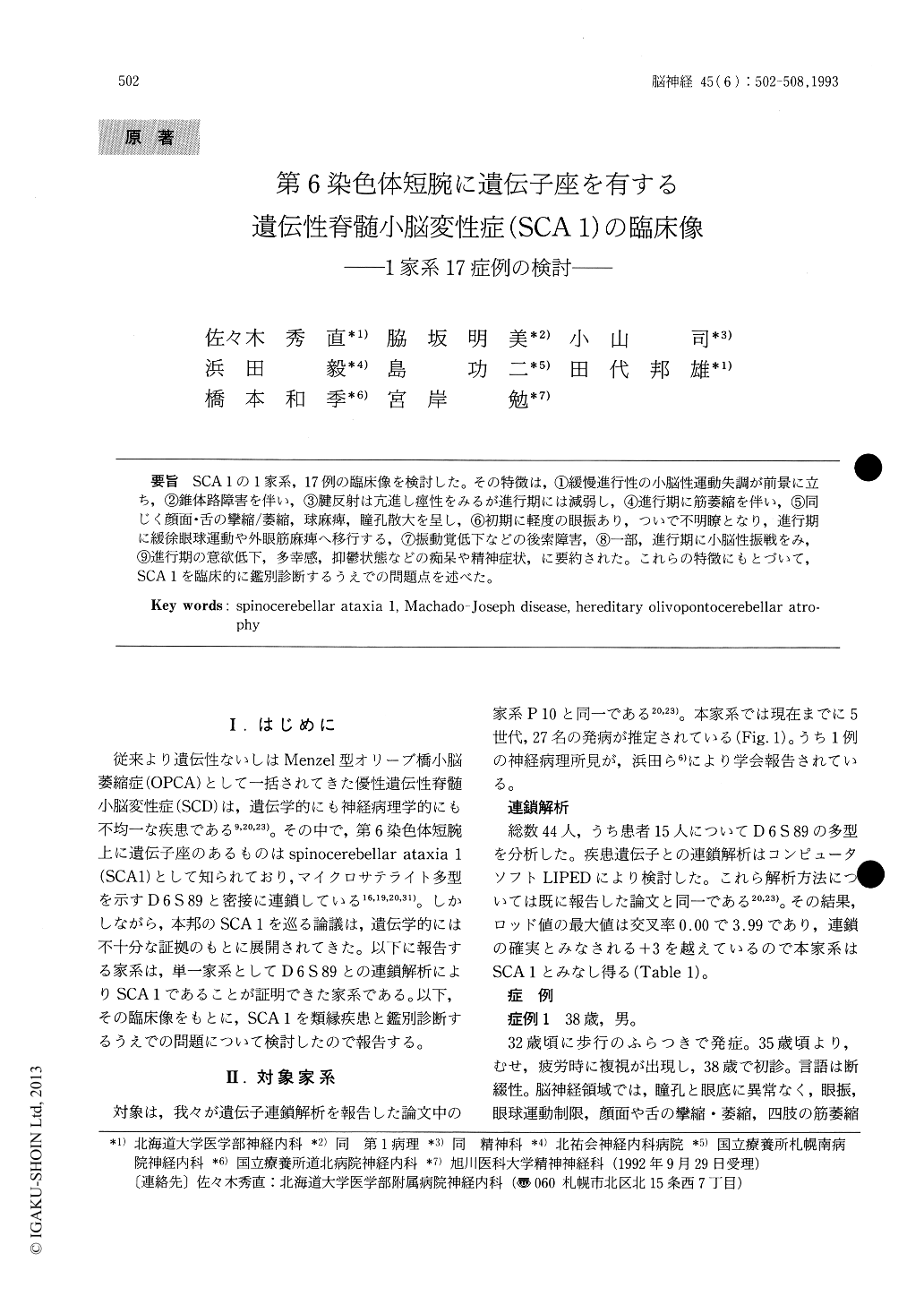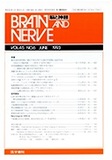Japanese
English
- 有料閲覧
- Abstract 文献概要
- 1ページ目 Look Inside
SCA1の1家系,17例の臨床像を検討した。その特徴は,①緩慢進行性の小脳性運動失調が前景に立ち,②錐体路障害を伴い,③腱反射は亢進し痙性をみるが進行期には減弱し,④進行期に筋萎縮を伴い,⑤同じく顔面・舌の攣縮/萎縮,球麻痺,瞳孔散大を呈し,⑥初期に軽度の眼振あり,ついで不明瞭となり,進行期に緩徐眼球運動や外眼筋麻痺へ移行する,⑦振動覚低下などの後索障害,⑧一部,進行期に小脳性振戦をみ,⑨進行期の意欲低下,多幸感,抑欝状態などの痴呆や精神症状,に要約された。これらの特徴にもとづいて,SCA 1を臨床的に鑑別診断するうえでの問題点を述べた。
We studied a large pedigree with dominant spinocerebellar ataxia, genetically and clinically. At now, 27 members over 5 generations have been affected. Linkage study for the disease locus to D6S89 in a total of 44 individuals showed maximum lod scores of 3.99 at θ=0.000. This result indicates that the disease locus of this pedigree locates near D6S89 on chromosome 6p (SCA 1) . We studied 17 patients clinically. Mean age at onset was 37.7±8.6, and mean duration after onset was 11.3±6.8 years. Their clinical features were characterized by progressive ataxia, pyramidal involvement with hyperreflexia or spasticity, and mild posterior col-lumn involvement. Mild gaze nystagmus at early stage became unclear with the progress of illness. The frequent signs in the advanced stage were diffuse amyotropy, twitching of face or tongue, bulbar palsy, slow saccade, external ophthalmopa-resis, mydriasis, coarse postural tremor, and dementia with emotional disturbance.
There are so much clinical similarities between our pedigree and other SCA 1 pedigrees in the litera-ture. Generally, SCA 1 shows hyperreflexia, spas-ticity, and terminal slow saccade. On the other hand, non-SCA 1 type OPCA is characterized by progressive hyporeflexia, slow eye movement from early stage, and frequent choreoathetosis. Gaze nystagmus, external opthalmoparesis, amyotrophy, and spasticity are common in both SCA 1 and Machado-Joseph disease (MJD). However, they are more frequent in MJD than SCA 1. Moreover, extrapyramidal signs, such as dystonia, are rare is SCA 1. Based on these difference, SCA 1 could be clinically differentiated from other similar heredi-tary ataxias.

Copyright © 1993, Igaku-Shoin Ltd. All rights reserved.


